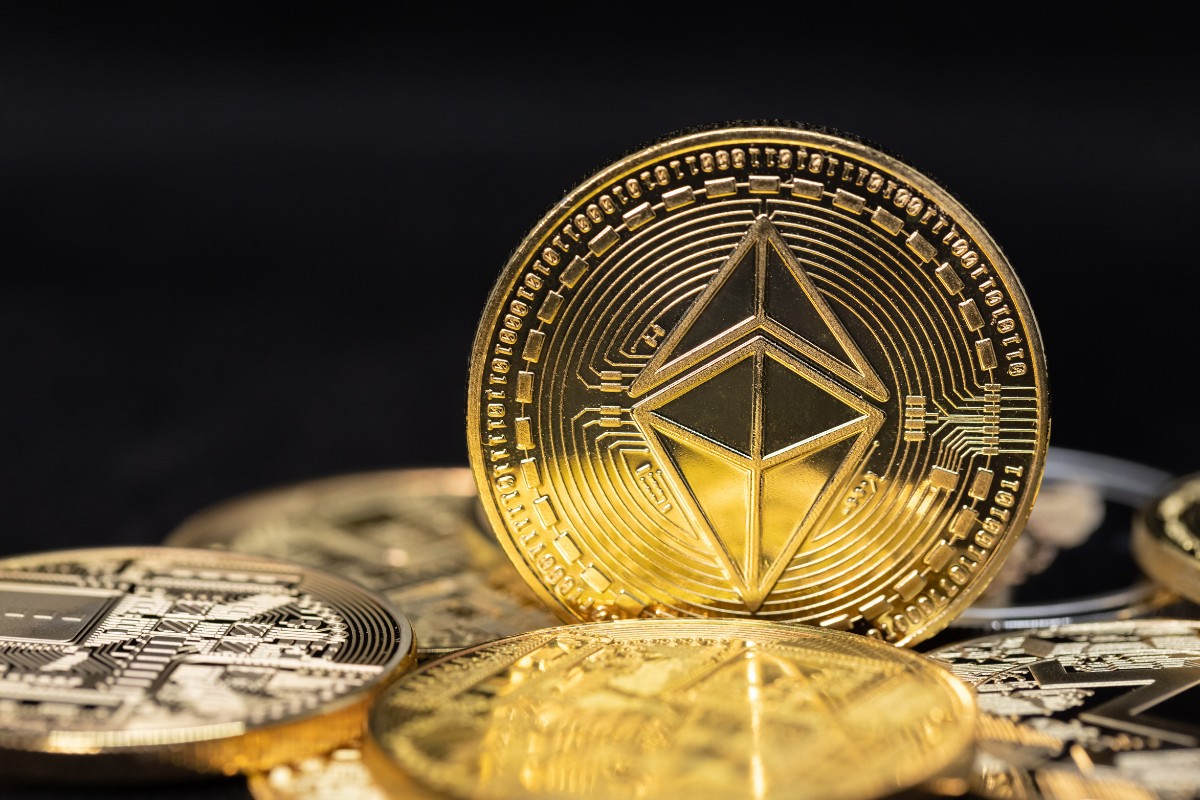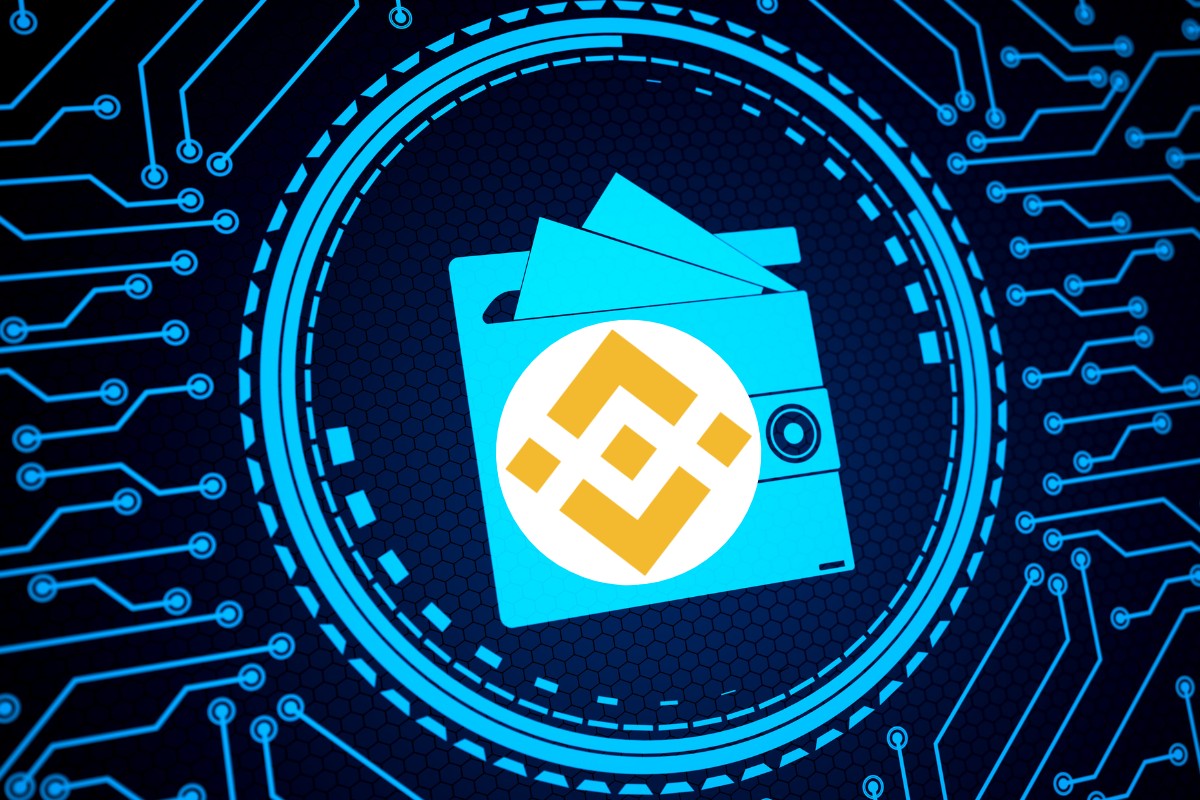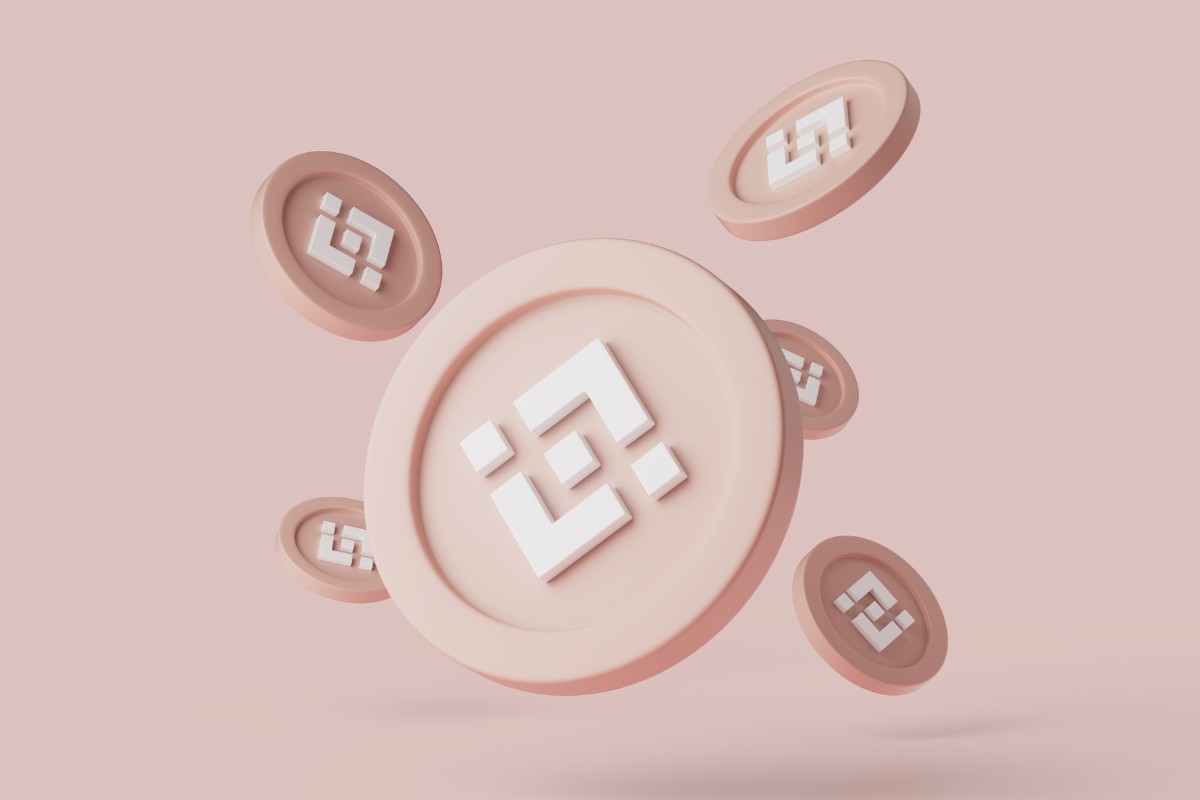Are you curious about what is Binance USD?
BUSD is a stablecoin cryptocurrency that is bridging the gap between traditional finance and cryptocurrencies.
One BUSD is equal to one US dollar, making it a reliable and secure option for those looking to invest in the crypto world without the volatility of other cryptocurrencies.
Binance, one of the largest cryptocurrency exchanges, formed a partnership with Paxos in 2019 to create BUSD.
Since then, BUSD has become one of the most popular fiat-backed stablecoins, ranking sixth among all cryptocurrencies in less than three years.
BUSD is built on the Binance Chain, a blockchain platform that offers users a wide range of options when it comes to digital assets.
If you’re interested in investing in cryptocurrencies but are hesitant due to the volatility of the market, BUSD may be a good option for you.
With its stable value and the security of being backed by the US dollar, BUSD offers a reliable option for those looking to enter the world of crypto.
Post Contents
What is Binance USD (BUSD)?
If you’re looking for a stablecoin that bridges the gap between traditional finance and cryptocurrencies, Binance USD (BUSD) might be just what you’re looking for.
Binance USD is a fiat-backed stablecoin issued by Binance and Paxos.
Each BUSD token is backed 1:1 with US dollars held in reserve.
BUSD aims to provide a more stable cryptocurrency alternative for traders and investors who are looking to avoid the volatility of the digital asset market.
One BUSD is equal to one US dollar, making it an excellent option for those who want to hold cryptocurrency without worrying about price fluctuations.
Binance formed a partnership with Paxos in September 2019 to create its own stablecoin, called Binance USD (BUSD).
BUSD is designed to be a reliable and transparent stablecoin that can be used for a variety of purposes, including trading, payments, and remittances.
Binance USD is one of the most popular stablecoins on the market, with a current market cap of $3.89B USD.
It is traded on several exchanges, including Coinbase, Kraken, and of course, Binance.
With a 24-hour trading volume of $1.63B USD, BUSD is a reliable and widely used stablecoin that you can trust.
Understanding Stablecoins

Stablecoins are a type of cryptocurrency that is designed to maintain a stable value.
They are pegged to other assets such as fiat currencies, commodities, or other cryptocurrencies.
Stablecoins are an essential part of the cryptocurrency market as they offer a way to mitigate volatility risks.
Role of Stablecoins in Cryptocurrency Market
Stablecoins play a critical role in the cryptocurrency market as they provide a stable store of value.
They offer a way to transact without the risk of significant price fluctuations, making them suitable for everyday use.
Stablecoins also provide a way to move funds between different cryptocurrency exchanges without the need to convert back to fiat currencies.
Different Types of Stablecoins
There are three main types of stablecoins: fiat-backed, crypto-backed, and algorithmic.
Fiat-Backed Stablecoins
Fiat-backed stablecoins are pegged to a fiat currency, such as the US dollar.
They are backed by actual fiat currency reserves held by a central authority or a consortium of entities.
Examples of fiat-backed stablecoins include Tether (USDT), USD Coin (USDC), and TrueUSD (TUSD).
Crypto-Backed Stablecoins
Crypto-backed stablecoins are collateralized by other cryptocurrencies.
They are designed to maintain a stable value by over-collateralizing with cryptocurrencies.
The most popular crypto-backed stablecoin is Dai (DAI), which is collateralized by Ethereum.
Algorithmic Stablecoins
Algorithmic stablecoins are not backed by any asset or collateral.
They rely on algorithms to maintain a stable value by adjusting the supply of the stablecoin based on market demand.
The most popular algorithmic stablecoin is Basis
How to Buy and Trade Binance USD
If you’re interested in buying and trading Binance USD (BUSD), here are the steps you need to follow:
Creating an Account
- Go to the Binance website or app and create a free account by providing your email address and password.
- Verify your account by completing the KYC process, which includes providing your personal information and a government-issued ID.
- Once your account is verified, you can deposit funds into your Binance account.
Depositing Funds
- Log in to your Binance account and select the “Deposit” option.
- Choose the currency you want to deposit (e.g., USD) and select the payment method you prefer (e.g., bank transfer, credit card).
- Follow the instructions to complete the deposit process.
Trading Binance USD
- Once your funds have been deposited, go to the “Trade” section of the Binance app or website.
- Select the “BUSD” trading pair and choose whether you want to buy or sell BUSD.
- Enter the amount of BUSD you want to buy or sell and review the order details.
- If everything looks good, confirm the order and wait for it to be executed.
Keep in mind that trading involves risk, and it’s important to do your own research and understand the risks before investing in any cryptocurrency.
Security and Regulation
When it comes to digital assets, security and regulation are two of the most critical aspects to consider.
Binance USD (BUSD) is a stablecoin that is regulated by the New York State Department of Financial Services (NYDFS).
This means that it is subject to the same rigorous standards and requirements as traditional financial institutions.
Security Measures
Binance USD has implemented several security measures to protect users’ funds.
First, it uses a custodian to hold the same number of US dollars as the total supply of BUSD.
This ensures that BUSD is fully backed by US dollars, providing users with peace of mind that their funds are safe and secure.
In addition to this, Binance USD also uses advanced security protocols such as multi-factor authentication and SSL encryption to protect users’ accounts.
Binance also has a dedicated security team that monitors the platform for any suspicious activity and takes action to prevent any potential security breaches.
Regulatory Compliance
Regulatory compliance is a top priority for Binance USD.
As mentioned earlier, it is regulated by the NYDFS, which means that it is subject to regular audits and inspections to ensure that it is operating in compliance with all applicable laws and regulations.
Binance USD also provides monthly attestation reports, which are conducted by an independent accounting firm.
These reports confirm that the number of BUSD in circulation is equal to the number of US dollars held in reserve.
This provides users with transparency and reassurance that their funds are secure and backed by US dollars.
It is important to note that while Binance USD is a regulated stablecoin, investing in digital assets always carries some level of risk.
It is essential to conduct your research and understand the risks involved before investing in any cryptocurrency.
Binance USD and Blockchain Technology
When it comes to Binance USD (BUSD), blockchain technology plays a crucial role in its operation.
Binance USD is built on top of blockchain technology, which ensures that it is secure, transparent, and decentralized.
In this section, we will explore how Binance USD leverages blockchain technology and its relationship with Binance Smart Chain, Ethereum, and ERC-20 tokens.
Binance Smart Chain
Binance Smart Chain (BSC) is a blockchain platform developed by Binance that is designed to be fast, secure, and efficient.
It is an independent blockchain that runs parallel to Binance Chain, which is a high-performance blockchain that is used for trading and transferring cryptocurrencies.
Binance Smart Chain is built on top of the Ethereum Virtual Machine (EVM), which means that it is compatible with Ethereum smart contracts and decentralized applications (dApps).
Binance Smart Chain offers several advantages over other blockchain platforms, such as low transaction fees, fast transaction confirmation times, and support for cross-chain interoperability.
These features make Binance Smart Chain an ideal platform for decentralized finance (DeFi) applications, which require fast and inexpensive transactions.
Ethereum and ERC-20
Ethereum is a decentralized blockchain platform that is used to build and deploy smart contracts and dApps.
It is the second-largest cryptocurrency by market capitalization after Bitcoin.
Ethereum has its own native cryptocurrency called Ether (ETH), which is used to pay for transaction fees and to incentivize miners to secure the network.
ERC-20 is a technical standard used for creating tokens on the Ethereum blockchain.
It defines a set of rules that a token must follow to be considered an ERC-20 token.
Most of the tokens used in DeFi applications are ERC-20 tokens, including Binance USD.
ERC-20 tokens are fungible, which means that each token is interchangeable with any other token of the same type.
Binance USD is an ERC-20 token, which means that it is built on top of the Ethereum blockchain and follows the ERC-20 standard.
This makes it compatible with most Ethereum wallets and DeFi applications.
It also makes it easier to integrate with other ERC-20 tokens, which is essential for DeFi applications that require interoperability between different tokens.
Market Analysis of Binance USD
Market Capitalization
Binance USD (BUSD) is a stablecoin that is pegged to the US dollar.
As of July 21st, 2023, BUSD has a market capitalization of $14.64 billion USD.
This makes it the second-largest stablecoin by market capitalization after Tether (USDT).
BUSD’s market cap has been steadily increasing over the past few years, which is a testament to its popularity and trustworthiness as a stablecoin.
Trading Volume
BUSD has a high trading volume on various cryptocurrency exchanges.
As of July 21st, 2023, BUSD has a 24-hour trading volume of $1.63 billion USD.
This high trading volume indicates that BUSD is widely used by traders and investors as a means of exchange and a store of value.
Binance USD has gained a significant market share in the stablecoin market due to its partnership with Binance, one of the largest cryptocurrency exchanges in the world.
BUSD is widely accepted on Binance and other exchanges, which has contributed to its popularity and widespread use.
Risks and Considerations
Price Volatility
When investing in Binance USD, it’s important to keep in mind that like any cryptocurrency, its value can be extremely volatile.
The price of BUSD can fluctuate rapidly and unpredictably, which means that there is a risk of significant losses if you invest in it.
It’s always a good idea to do your research and understand the potential risks and rewards before investing your money.
Investment Decisions
Investment decisions should always be made after careful consideration of your personal financial situation, risk tolerance, and investment goals.
It’s important to remember that past performance is not a guarantee of future performance, and that there is always a risk of loss when investing in any asset, including Binance USD.
When deciding whether to invest in Binance USD, it’s important to consider the reliability and accuracy of the information you are using to make your decision.
Make sure to do your own research and consult with a financial advisor if you have any questions or concerns.
Additional Features of Binance USD

Binance USD and NFTs
Binance USD (BUSD) has been gaining popularity among NFT collectors and traders.
Its stable value and compatibility with multiple exchanges make it a preferred currency for buying and selling NFTs.
BUSD can be used to purchase NFTs on Binance NFT Marketplace, OpenSea, and other platforms that accept BUSD as payment.
Binance USD Wallets
Binance USD is supported by multiple wallets, including Trust Wallet, Ledger, and Trezor.
These wallets provide a secure way to store and manage your BUSD.
With Trust Wallet, you can also earn interest on your BUSD through staking.
BUSD can also be stored on Binance Exchange, where you can easily convert it to other cryptocurrencies or fiat currencies.
Here’s a table summarizing some of the popular wallets that support BUSD:
| Wallet | Features |
|---|---|
| Trust Wallet | Mobile wallet with staking options |
| Ledger | Hardware wallet with high security |
| Trezor | Hardware wallet with advanced features |
| Binance Exchange | Exchange wallet with easy conversion options |
Key Takeaways
If you’re looking for a stablecoin that is pegged to the US dollar, Binance USD (BUSD) might be a good option for you.
Here are some key takeaways to keep in mind:
- Binance USD is a regulated stablecoin that is backed by Binance, one of the largest cryptocurrency exchanges in the world.
- BUSD is pegged to the US dollar at a 1:1 ratio, which means that one BUSD is always worth one US dollar.
- Binance USD has a unique tokenomics system that has allowed it to keep the price equal to one US dollar. This system is based on a partnership with Paxos, a regulated financial institution that holds the US dollars backing BUSD.
- BUSD is compatible with both Ethereum and Binance Chain, which means that it can be used in a variety of different applications.
- Binance USD is a centralized stablecoin, which means that it is not fully decentralized like some other cryptocurrencies. However, this centralized structure can provide some benefits in terms of security and stability.
- If you want to buy Binance USD, you can do so on Binance or on other cryptocurrency exchanges that support BUSD.
- Binance USD is just one of many stablecoins on the market, so it’s important to do your research and compare different options before making a decision.






























